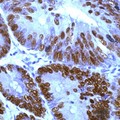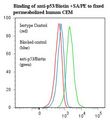Login
Registration enables users to use special features of this website, such as past
order histories, retained contact details for faster checkout, review submissions, and special promotions.
order histories, retained contact details for faster checkout, review submissions, and special promotions.
Forgot password?
Registration enables users to use special features of this website, such as past
order histories, retained contact details for faster checkout, review submissions, and special promotions.
order histories, retained contact details for faster checkout, review submissions, and special promotions.
Quick Order
Products
Antibodies
ELISA and Assay Kits
Research Areas
Infectious Disease
Resources
Purchasing
Reference Material
Contact Us
Location
Corporate Headquarters
Vector Laboratories, Inc.
6737 Mowry Ave
Newark, CA 94560
United States
Telephone Numbers
Customer Service: (800) 227-6666 / (650) 697-3600
Contact Us
Additional Contact Details
Login
Registration enables users to use special features of this website, such as past
order histories, retained contact details for faster checkout, review submissions, and special promotions.
order histories, retained contact details for faster checkout, review submissions, and special promotions.
Forgot password?
Registration enables users to use special features of this website, such as past
order histories, retained contact details for faster checkout, review submissions, and special promotions.
order histories, retained contact details for faster checkout, review submissions, and special promotions.
Quick Order
| Catalog Number | Size | Price |
|---|---|---|
| LS-C751400-100 | 100 µg (1 mg/ml) | $574 |
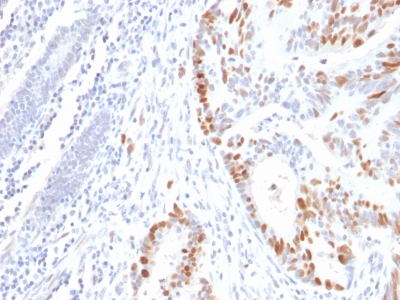

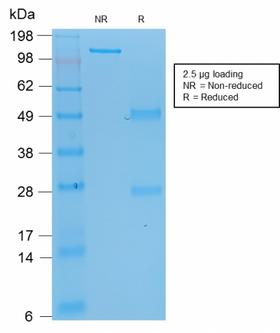



1 of 3
2 of 3
3 of 3
Recombinant Monoclonal Mouse anti‑Human TP53 / p53 Antibody (clone rBP53‑12, Azide‑free,Carrier‑free, IHC, WB) LS‑C751400
Recombinant Monoclonal Mouse anti‑Human TP53 / p53 Antibody (clone rBP53‑12, Azide‑free,Carrier‑free, IHC, WB) LS‑C751400
Antibody:
TP53 / p53 Mouse anti-Human Recombinant Monoclonal (Azide-free, Carrier-free) (rBP53-12) Antibody
Application:
IHC-P, WB
Reactivity:
Human
Format:
Unconjugated, Azide-free, Carrier-free
Other formats:
Toll Free North America
 (800) 227-6666
(800) 227-6666
For Research Use Only
Overview
Antibody:
TP53 / p53 Mouse anti-Human Recombinant Monoclonal (Azide-free, Carrier-free) (rBP53-12) Antibody
Application:
IHC-P, WB
Reactivity:
Human
Format:
Unconjugated, Azide-free, Carrier-free
Other formats:
Specifications
Description
P53 antibody LS-C751400 is an unconjugated mouse recombinant monoclonal antibody to human p53 (TP53). Validated for IHC and WB.
Target
Human TP53 / p53
Synonyms
TP53 | BCC7 | Cellular tumor antigen p53 | p53 | TRP53 | p53 tumor suppressor | Phosphoprotein p53 | Antigen NY-CO-13 | Tumor protein p53 | Tumor suppressor p53 | LFS1
Host
Mouse
Reactivity
Human
(tested or 100% immunogen sequence identity)
Non-Reactivity
Mouse, Rat
Clonality
IgG1
Recombinant Monoclonal
Clone
rBP53-12
Conjugations
Unconjugated
Purification
Protein A/G purified
Modifications
Azide-free, Carrier-free.
Also available Unmodified.
Immunogen
Recombinant human wild-type p53 protein. Antigen Molecular Weight: 53 kDa
Specificity
This MAb reacts with an N-terminal epitope (aa 16-25) of both wild type and mutated p53. Mutation and/or allelic loss of p53 is one of the causes of a variety of mesenchymal and epithelial tumors. If it occurs in the germ line, such tumors run in families. In most transformed and tumor cells the concentration of p53 is increased 51000 fold over the minute concentrations (1000 molecules cell) in normal cells, principally due to the increased half-life (4 h) compared to that of the wild-type (20 min). p53 Localizes in the nucleus, but is detectable at the plasma membrane during mitosis and when certain mutations modulate cytoplasmic/nuclear distribution. Mutations arise with an average frequency of 70% but incidence varies from zero in carcinoid lung tumors to 97% in primary melanomas. High concentrations of p53 protein are transiently expressed in human epidermis and superficial dermal fibroblasts following mild ultraviolet irradiation. Positive nuclear staining with p53 antibody has been reported to be a negative prognostic factor in breast carcinoma, lung carcinoma, colorectal, and urothelial carcinoma. Anti-p53 positivity has also been used to differentiate uterine serous carcinoma from endometrioid carcinoma as well as to detect intratubular germ cell neoplasia.
Applications
- IHC - Paraffin (0.5 - 1 µg/ml)
- Western blot (0.5 - 1 µg/ml)
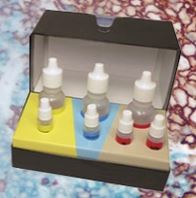
|
Performing IHC? See our complete line of Immunohistochemistry Reagents including antigen retrieval solutions, blocking agents
ABC Detection Kits and polymers, biotinylated secondary antibodies, substrates and more.
|
Usage
Western Blotting (0.5-1 ug/ml) - Immunohistology (Formalin-fixed - 0.5-1 ug/ml for 30 minutes at RT - Staining of formalin-fixed tissues requires boiling tissue sections in 10 mM citrate buffer, pH 6.0, for 10-20 min followed by cooling at RT for 20 minutes.) Optimal dilution for a specific application should be determined.
Presentation
10 mM PBS
Storage
Store at -20°C to -80°C for up to 2 years.
Restrictions
For research use only. Intended for use by laboratory professionals.
About TP53 / p53
Publications (0)
Customer Reviews (0)
Featured Products
Species:
Human
Applications:
IHC, IHC - Paraffin, Immunofluorescence, Western blot, Immunoprecipitation, ELISA, Chromatin Immunoprecipitation
Species:
Mouse, Human, Rat, Bovine, Hamster, Chicken
Applications:
IHC, Western blot, Flow Cytometry
Species:
Human
Applications:
IHC, IHC - Paraffin, Western blot
Species:
Human
Applications:
IHC, IHC - Paraffin, IHC - Frozen, Western blot, Immunoprecipitation, ELISA
Request SDS/MSDS
To request an SDS/MSDS form for this product, please contact our Technical Support department at:
Technical.Support@LSBio.com
Requested From: United States
Date Requested: 3/10/2025
Date Requested: 3/10/2025


